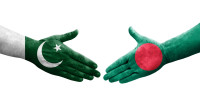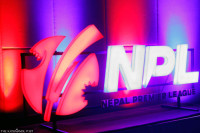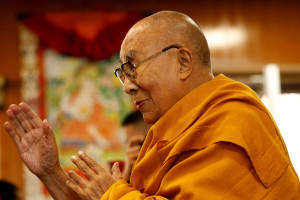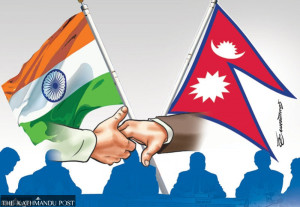Columns
Women and change
Comprehending women leaders is always a challenge for the power elites.
Muhammad Amir Rana
With their unwavering courage, Pakistani women have been challenging the odds and reshaping the country’s social and political landscape. Their increasing participation in political and rights movements, a testament to their bravery, can be read as ‘change is coming’.
The role of women significantly shapes the ongoing struggle against religious bigotry in the country. The images of police torture inflicted upon human rights activists, particularly on a young woman lawyer in Karachi, will be remembered. The visuals of Dr Mahrang Baloch, who was prevented from travelling to New York, added to the existing detestation of the government, which has been restricting freedoms in the country. She had been included in Time’s 100 most influential people of the year and was on her way to deliver a talk at a ceremony organised by the magazine. The significant participation of women in a jirga organised by the Pashtun Tahaffuz Movement (PTM) in Khyber district last week signals that silence is no longer an option, and women are becoming indispensable to the conduct of national affairs.
Change is underway, but its duration remains uncertain, as the perpetrators of oppression are still strong, especially given their solid institutional foundation and support from the power elite. However, recent developments offer a glimmer of hope that gender inequality is being challenged more structurally across the country. Many experts argue that the issue has gone beyond gender inequality, and reflects broader socio-political and cultural pressures that draw clear lines between the privileged elite and those who feel oppressed. It may also represent a silent transformation that has been unfolding for some time.
This shift is happening nationwide, including in Punjab, though the expressions of the change differ. When incidents of violence against women are normalised, and women haters justify such acts—perhaps by importing a misogynistic mullah to fuel damaging debates—the hysteria following allegations of a girl being raped in a Punjab hostel should come as no surprise. The youth in Punjab, influenced by recent events and the report of a sexual assault, are voicing their sentiments more than ever. Protests against extremism and movements advocating for rights in the other provinces are likely to have an impact in Punjab too. Amid political chaos and rising social discontent, misogynistic narratives propagated by certain religious factions are facing a backlash.
Many youth in Punjab have united behind a fair cause and are reacting against injustices that have become commonplace. Their unity mirrors reactions in other provinces and their increasing participation and prominent roles indicate that, with political awakening, social structures are also undergoing a transformation. The role of women in the political opposition, mainly the women in Punjab who are facing hardship, cannot be ignored. Women’s participation in politics in the province can be considered as part of the ongoing transformation.
Indeed, Pakistan has a history of women playing critical roles in politics and social development. However, most of these women belong to the upper classes, and their role has not triggered any significant transformation in society. Few women have emerged as universal symbols of courage and resistance, like the late Asma Jahangir. Now, the major difference between the two generations is that the new women leaders come from humble backgrounds, and socio-political circumstances have pushed them to act for change. These women have been supported by their communities, and their leadership has evolved organically. This gives optimism that the change will last long.
Comprehending women leaders is always a challenge for the power elites, who resort to their character assassination. The second argument, often used against women’s participation in social and political reforms, is taken from faith and culture. This approach creates hindrances. A combination of all these factors shows how power structures in Pakistan are inherently misogynistic; they don’t even change when women become prime ministers or chief ministers.
The PPP was recently being criticised for its brutal treatment of civil society, which was protesting against extremism. But this is not new for the ruling party of Sindh. Ruling elites always cater to the interests of the majority and those who are more powerful. The extremists are powerful in Sindh and have infiltrated the police, and the government is protecting their interests.
This is not limited to the PPP; all political parties are sympathetic to the establishment when they are in power. All major mainstream political parties sympathise with the oppressed and marginalised communities when they are in the opposition and face victimisation by the establishment. While sympathising with the marginalised, these parties sell their victimhood to gain power. Once in power, they deal with these communities and rights movements as the establishment wishes.
Rights movements may also reveal a tendency to ally with the establishment, as was witnessed recently when the Haq Do Tehreek in Gwadar compromised to secure a few electoral constituencies. Similar examples can be found in the PTM. However, the risk of compromise is reduced with a women leadership and its increased participation within right movements, as women leaders are seen as more dedicated to their cause and sound in the art of negotiation.
One may argue that women also actively participate in religious parties’ activities. This may be an encouraging thought, but such participation is mostly limited to attending the religious parties’ rallies and holding fund-collection drives. These parties hardly allow their women to lead from the front or take an active role in decision-making in party affairs. Secondly, their participation in religious and political activities remains mostly confined to protecting the social and political status quo.
Women’s role in the PTM is particularly critical. The fact that these women are facing multiple societal, political, and religious pressures as well as the TTP danger in their area cannot be underestimated: The banned group is the ally of the worst misogynistic regime—the Afghan Taliban. The resistance of these women is a beacon of hope not only for Pakistani but also for Afghan women.
-Dawn (Pakistan)/ANN




 10.12°C Kathmandu
10.12°C Kathmandu















